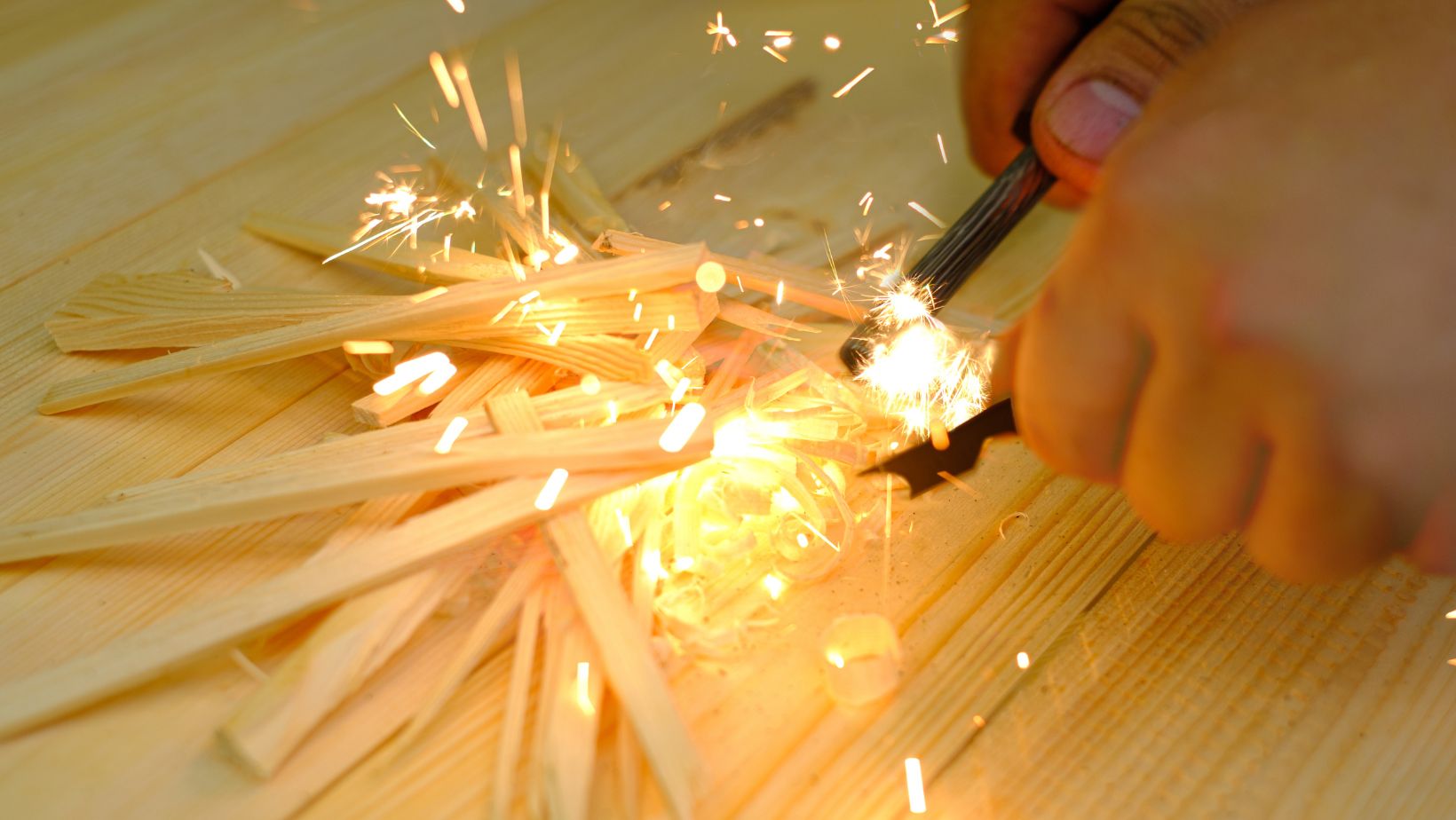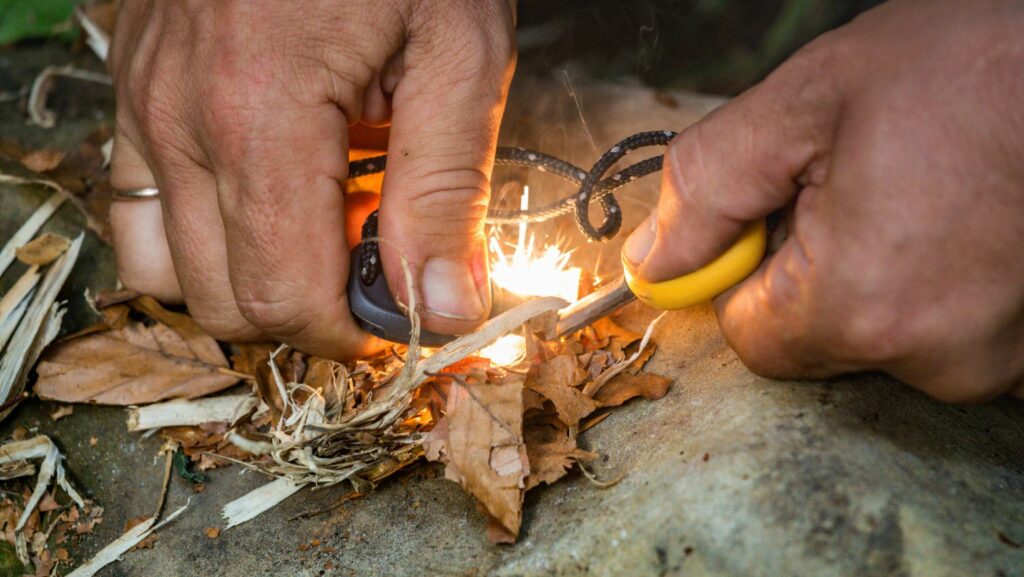How to Craft a Flint and Steel
Crafting a flint and steel is a survival skill that’s been used for centuries. It’s not just a handy tool for starting a fire when you’re out camping, it’s also a testament to our ancestor’s ingenuity. In this article, I’ll guide you through the process of making your own flint and steel.
Flint and steel fire-starting is a simple process that involves striking a hard, sharp piece of flint against a piece of high-carbon steel. The sparks generated from this process can be used to ignite a small pile of tinder, bringing warmth and light to your campsite. This method is reliable, even in harsh weather conditions, making it a must-know for any outdoor enthusiast.
Before we dive into the specifics, it’s important to note that the quality of your materials can greatly affect your success. High-quality flint and a good piece of steel can make the difference between a roaring fire and a frustrating experience. So, let’s get started and learn how to craft a flint and steel that’ll serve you well in the great outdoors.
What is Flint and Steel?
Flint and steel are two essential tools used in the primitive method of fire-starting. Flint, a type of sedimentary rock, is known for its ability to produce a spark when struck against steel. This spark can ignite a small pile of dry tinder, starting a fire.
The steel part of this equation isn’t your everyday steel. It’s specifically ‘high carbon’ steel. This type of steel is very hard and produces better sparks when struck against the flint.
The beauty of using flint and steel is that they’re extremely reliable. Unlike matches or lighters, they don’t get wet or run out of fuel. In fact, they can work even in the harshest weather conditions.
In the next section, I’ll delve deeper into how to choose the right flint and steel and how to use them effectively. Remember, the key to success with flint and steel is the quality of your materials and your skill in using them. So let’s move forward and learn more about this fascinating survival tool.

The History of Flint and Steel
Flint and steel have been a dynamic duo in fire-starting for centuries. This technique dates back to the Iron Age when our ancestors discovered that striking flint against steel produced sparks. These sparks, when directed onto dry tinder, could ignite and start a fire.
In the middle ages, flint and steel were used extensively. Travelers, soldiers, and explorers relied on this method to light fires for warmth, cooking, and protection. It was an essential survival tool.
This method remained popular until the mid-19th century. With the invention of matches and lighters, flint and steel became less common. Today, they’re mostly used in survival situations and outdoor adventures. Despite the advancements in technology, flint and steel continue to be a reliable fire-starting method.
Materials Needed
For a successful DIY flint and steel fire-starting kit, you’ll need a few essential materials. Quality is key here as the materials you choose can significantly impact your success rate when starting a fire. Let’s delve into what you’ll need:
- Flint Rock – As the name suggests, you’ll need flint. It’s a type of sedimentary rock known for its ability to produce sparks when struck against high carbon steel. The best flint is hard, sharp and has a glass-like fracture. You can often find this in areas where chalk and limestone are present.
- High Carbon Steel – This is the ‘steel’ part of your flint and steel. High carbon steel is desirable because it’s more reactive with flint, thereby producing hotter sparks. Any piece of carbon steel will work, but an old file or a striker designed for fire-starting would be ideal.
- Char Cloth – Char cloth is a piece of fabric that’s been turned into a slow-burning fuel source. It’s perfect for catching the sparks from the flint and steel and transforming them into a flame. You can make your own char cloth using a cotton fabric and a fire.
- Tinder – Finally, you’ll need dry tinder. This is what your char cloth ember will ignite to start your fire. Tinder can be anything from dry leaves, grass, small twigs, or specially prepared fire starters.
Now that we’ve covered the materials needed, the next section will guide you through the process of using these materials to make your own flint and steel.
Remember, the right flint should be hard, sharp, and have a glass-like fracture. High carbon steel, properly shaped and tempered, will produce effective sparks. Striking the flint correctly is key, and dry tinder is a must. I’ve given you step-by-step instructions to make this process as smooth as possible.

